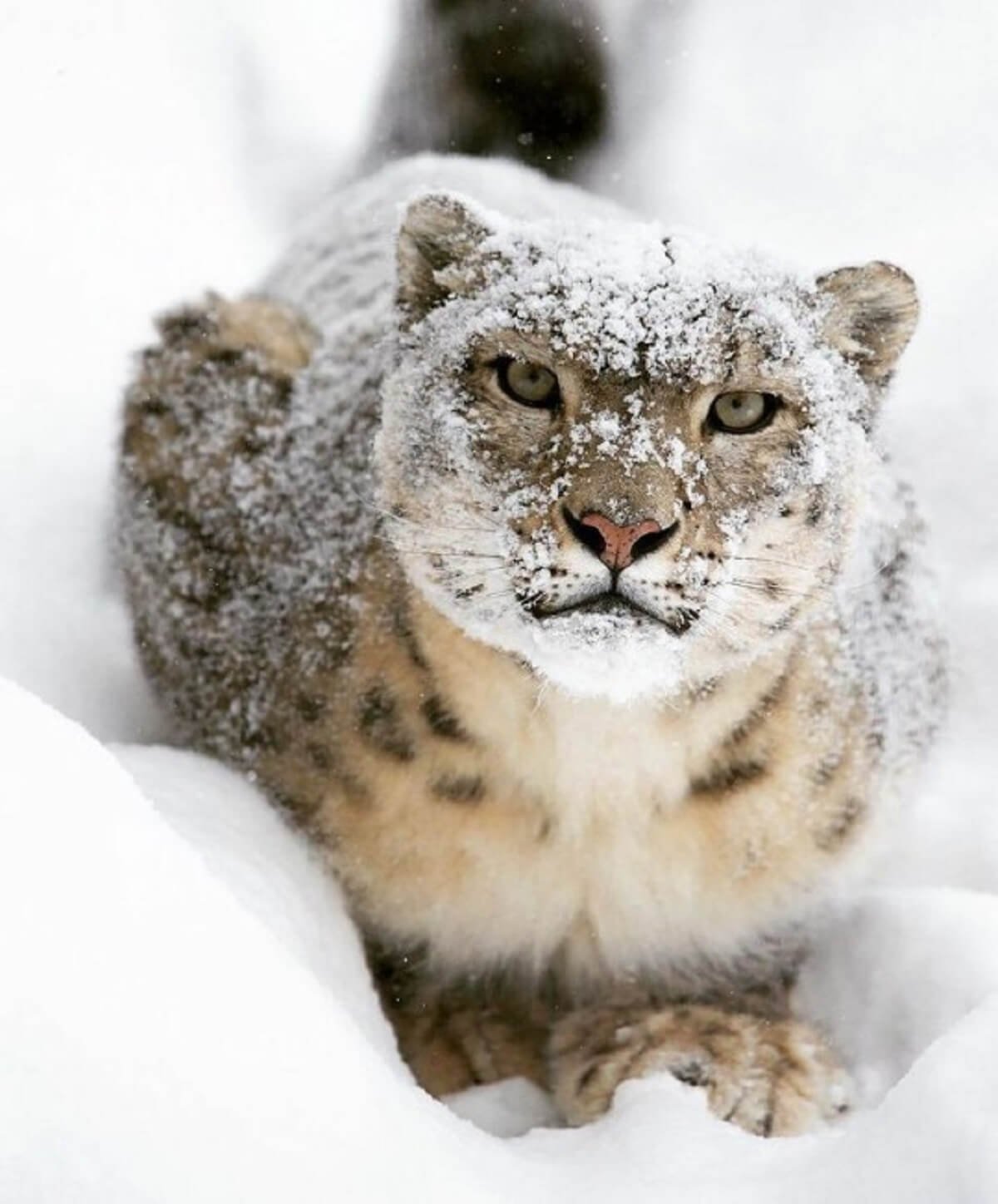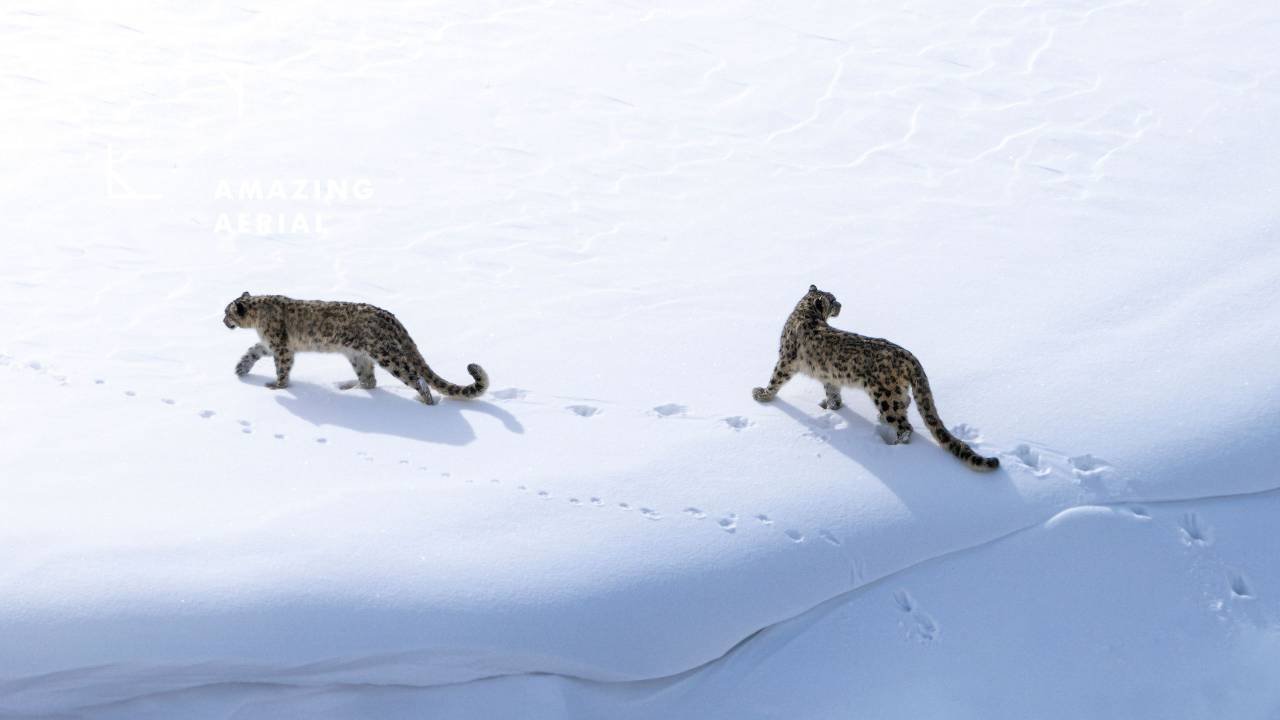The snow leopard, often called the “ghost of the mountains,” is one of nature’s most resilient predators. Thriving in some of the world’s harshest environments, this elusive big cat roams the rugged mountain ranges of Central and South Asia, where temperatures can plummet well below freezing. How does it endure such extreme cold?
1. Thick Fur for Insulation

The snow leopard’s dense, luxurious coat is its first line of defense against the cold. With fur that can grow up to 5 centimeters (2 inches) long, it traps body heat while repelling the icy winds of the high-altitude terrain. The coat’s unique pattern also provides camouflage, helping the leopard blend seamlessly into its rocky, snow-covered habitat.
2. Stocky Build and Fat Reserves

Snow leopards have a compact, stocky build that minimizes heat loss. Their short, muscular limbs reduce exposure to the cold, while their bodies store fat reserves to sustain them during lean winter months when prey is scarce.
3. Thick, Furry Tail

One of the snow leopard’s most distinctive features is its long, bushy tail, which can be as long as its body. The tail serves multiple purposes: it helps the leopard maintain balance on steep, rocky slopes, and it acts as a built-in scarf. When resting, the leopard wraps its tail around its body and face for added warmth.
4. Specialized Paws for Snowy Terrain

The snow leopard’s large, fur-covered paws function like natural snowshoes, distributing its weight and allowing it to move silently across snow without sinking. The fur also protects the paws from frostbite, ensuring they stay warm in sub-zero conditions.
5. Efficient Hunting and Diet

Living in a challenging environment, snow leopards are opportunistic hunters. They prey on hardy mountain animals like ibex, blue sheep, and marmots. A single kill can sustain them for several days, reducing the need to expend energy searching for food in the cold.
6. High-Altitude Adaptations

Snow leopards are uniquely adapted to high altitudes, where oxygen levels are low, and temperatures are freezing. Their large nasal cavities warm the cold air before it enters their lungs, while their thick, muscular chest aids in breathing efficiently in thin air.
7. Solitary and Stealthy Behavior
By living a solitary lifestyle and staying active only during specific times, snow leopards conserve energy. Their stealth and patience allow them to ambush prey with minimal effort, a crucial survival strategy in their sparse, icy environment.
These remarkable adaptations have enabled the snow leopard to endure and thrive in its unforgiving habitat for thousands of years. However, despite its resilience, this majestic species faces threats from habitat loss and climate change, making conservation efforts vital to ensuring its survival in the wild.




